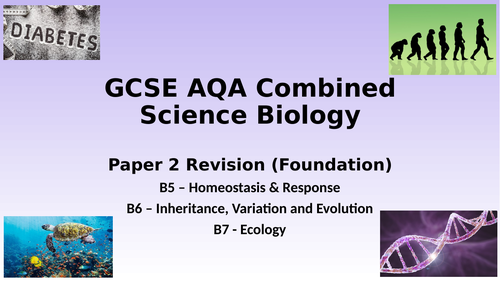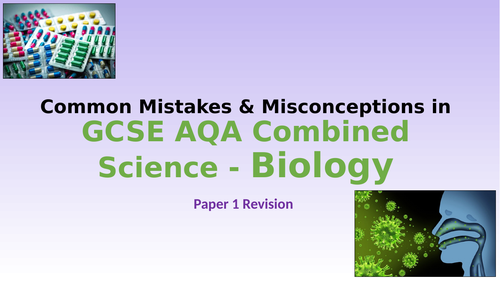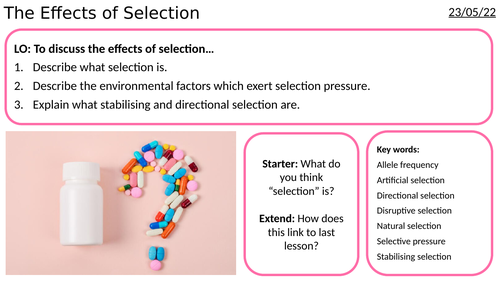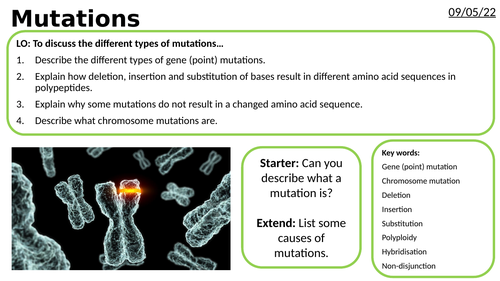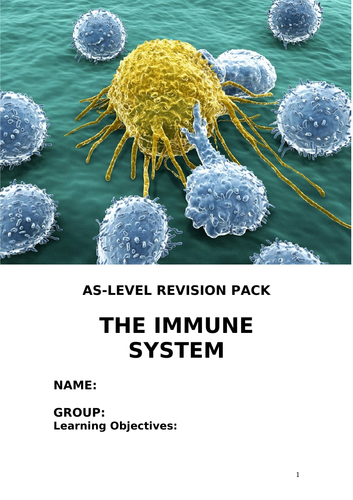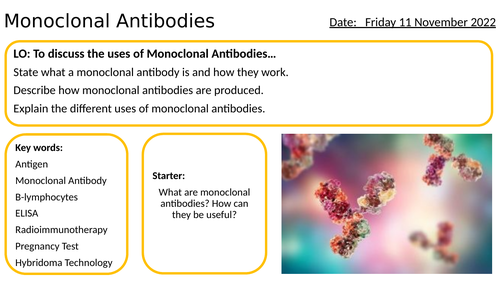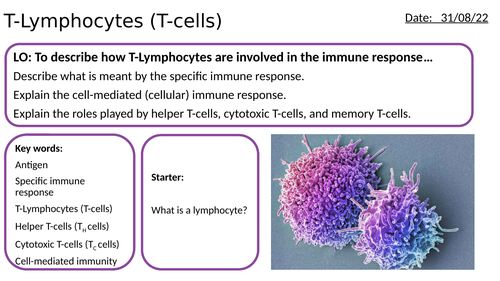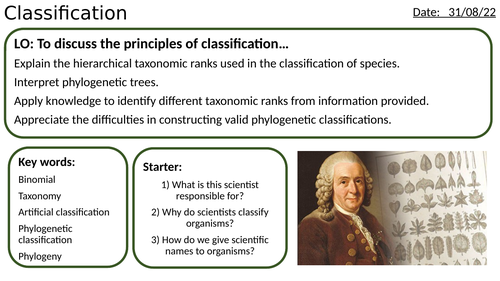63Uploads
16k+Views
13k+Downloads
Biology

GCSE AQA Trilogy Combined Science Biology Paper 2 Revision Lesson
GCSE AQA Trilogy Combined Science Biology Paper 2 Revision Lesson
1-2 hour revision lesson covering key concepts in GCSE AQA Combined Science Biology, with a focus on Paper 2 topics (B5, B6 and B7). Includes 72 marks of practice exam questions (with answers) on…
B5 - Homeostasis & Response
B6 - Inheritance, Variation & Evolution
B7 - Ecology
Aimed at Foundation students, but could also be used with Higher.
Bundle

GCSE AQA Trilogy Combined Science Biology Paper 1 and Paper 2 Revision Lessons *BUNDLE*
GCSE AQA Trilogy Combined Science Biology Paper 1 and Paper 2 Revision Lessons BUNDLE

GCSE AQA Trilogy Combined Science Biology Paper 1 Revision Lesson
**GCSE AQA Trilogy Combined Science Biology Paper 1 Revision Lesson
**
1 hour revision lesson on Common Mistakes and Misconceptions in GCSE AQA Combined Science Biology, with a focus on Paper 1 topics (B1, B2, B3 and B4). Includes…
Common mistakes and misconceptions in topic B3 (Infection and Response), with exam tips, practice questions and answers.
Common mistakes and misconceptions in topic B4 (Bioenergetics), with exam tips, practice questions and answers.
Retrieval quiz (with answers) on topics B1 (Cell Biology) and B2 (Organisation).
6 mark exam question practice (with mark schemes) for foundation tier and higher tier students.

AS/A2-Level AQA Biology The Effects of Selection Full Lesson
A full 60 minute lesson on The Effects of Selection, covering the following LOs…
Describe what selection is.
Describe the environmental factors which exert selection pressure.
Explain what stabilising and directional selection are.
Lesson includes starter task, summary questions (and answers), plenary, and also a homelearning task with practice exam questions (and mark scheme).

AS/A2-Level AQA Biology Species (Courtship Displays/Behaviour) Full Lesson
A full 60 minute lesson on Species (Courtship Displays/Behaviour), covering the following LOs…
Explain what a species is.
Appreciate the difficulties in defining the term species.
Explain the role of courtship and why it is necessary.
Interpret information and data relating to courtship displays.
Lesson includes starter task, class discussion, and practice exam questions (and mark scheme).

AS/A2-Level AQA Biology Biodiversity (within a community) Full Lesson
A full 60 minute lesson on Biodiversity (within a community), covering the following LOs…
Explain what is meant by the terms biodiversity, species richness and index of diversity.
Calculate the index of diversity when supplied with relevant information.
Interpret information and draw conclusions from the index of diversity for different habitats.
Explain how farming techniques impact on biodiversity and the reason why these techniques are used.
Evaluate conservation techniques and why these must be balanced with farming.
Lesson includes starter task, recall questions (and answers), and also practice exam questions (and mark scheme).
Bundle

AS/A2-Level AQA Biology - Topic 4: Genetic Information, Variation & Relationships between Organisms *14 LESSON BUNDLE*
AS/A2-Level AQA Biology - Topic 4: Genetic Information, Variation & Relationships between Organisms 14 LESSON BUNDLE
INCLUDES THE FOLLOWING LESSONS…
DNA, genes and chromosomes
Protein synthesis - transcription
Protein synthesis - translation
Gene and chromosome mutations
Meiosis and genetic variation
Genetic diversity and adaptation
The effects of selection
RP6 Investigating selection aseptic technique antibiotics bacterial growth
Classification (phylogeny, taxonomy)
Advances in classification technology
Species (courtship displays/behaviour)
Biodiversity (within a community)
Investigating diversity
Quantitative investigations of diversity
Individual lessons worth £39! Save 33% by buying the bundle.

AS/A2-Level AQA Biology Light dependent reaction of photosynthesis Full Lesson
A full lesson on Light dependent reaction of photosynthesis, covering the following LOs…
Explain where, specifically, the light-dependent reaction occurs.
Explain the role of light in photolysis and photoionisation.
Explain how photoexcited electrons move along the electron transfer chain, and how ATP and reduced NADP are produced.
Explain chemiosmosis and the role of ATP synthase in producing ATP.
Lesson includes starter task and practice exam questions (with mark scheme).

AS/A2-Level AQA Biology Chloroplast Structure Full Lesson
A full lesson on Chloroplast Structure, covering the following LOs…
Describe the structure of chloroplasts.
Explain how the structure of a chloroplast is linked to it’s function.
Lesson includes starter task and practice exam questions (with mark scheme).

AS/A2-Level AQA Biology Gene and Chromosome Mutations Full Lesson
A full 60 minute lesson on Mutations, covering the following LOs…
Describe the different types of gene (point) mutations.
Explain how deletion, insertion and substitution of bases result in different amino acid sequences in polypeptides.
Explain why some mutations do not result in a changed amino acid sequence.
Describe what chromosome mutations are.
Lesson includes starter task, summary questions (and answers), plenary, and also a homelearning task with practice exam questions (and mark scheme).

AS/A2 Level Year 12/13 Immune System Immunity Revision Booklet Pack
Revision pack for students to fill out (including exam tips and practice questions), covering the following topics on the immune system…
LO1) Describe the physical and chemical (non-specific) defences against pathogens in animals, including the skin, blood clotting, wound repair, inflammation, expulsive reflexes and mucous membranes.
LO2) Describe the structure and mode of action of phagocytes in the non-specific (innate) immune response, including neutrophils and antigen-presenting cells and the roles of cytokines, opsonins, phagosomes and lysosomes.
LO3) Describe the structure, different roles and modes of action of T lymphocytes in the specific (adaptive) immune response, including clonal selection and clonal expansion, T helper cells, T killer cells, T regulatory cells and memory cells.
LO4) Describe the structure, different roles and modes of action of B lymphocytes in the specific (adaptive) immune response, including plasma cells and memory cells.
LO5) Explain the significance of cell signaling, with reference to interleukins.
LO6) Examine and draw cells observed in blood smears.
LO7) Describe the structure and functions of antibodies.
LO8) Describe the actions of agglutinins and anti-toxins.
LO9) Describe the difference between primary and secondary immune responses, including the roles of T memory and B memory cells.
LO10) Describe the differences between active and passive immunity, and between natural and artificial immunity, and state examples of each.
LO11) Describe what autoimmunity is, and give examples.
LO12) Explain the main principles of vaccination and the role of vaccination programmes in the prevention of epidemics.

iGCSE Science: Reliability, Accuracy, and Validity Lesson Pack - Evaluating Experimental Data
iGCSE Science: Reliability, Accuracy, and Validity Lesson Pack- Evaluating Experimental Data
Lesson pack designed to help students understand the difference between reliability, accuracy and validity when evaluating experimental data.
Created for iGCSE, but can be easily adapted to suit other exam boards.
Lesson consists of…
Differentiated learning objectives.
RAG starter questions with extension activity, key word handouts, and answers.
Accurate vs. reliable dartboard activity with worksheets.
BIG PHARMA Bingo activity, with bingo statements and 15 bingo cards.
“Would I lie to you?” plenary.
Works really well for Year 9, 10 or 11.
Bundle

AS/A2-Level AQA Biology - Topic 2: Cells - Cell recognition and the immune system *8 LESSON BUNDLE*
AS/A2-Level AQA Biology - Topic 2: Cells - Cell recognition and the immune system 8 LESSON BUNDLE
INCLUDES THE FOLLOWING LESSONS…
Antigens and Immunity
Phagocytosis
T-Lymphocytes (Cell-mediated Immunity)
Antibodies
B-Lymphocytes (Humoral Immunity)
Active and Passive Immunity (Vaccination)
Human Immunodeficiency Virus (HIV)/AIDs
Monoclonal Antibodies
Individual lessons worth £21! Save 17% by buying the bundle.

AS/A2-Level AQA Biology Monoclonal Antibodies Hybridoma ELISA Pregnancy Test Immunity Full Lesson
A full lesson on Monoclonal Antibodies, covering the following LOs…
State what a monoclonal antibody is and how they work.
Describe how monoclonal antibodies are produced.
Explain the different uses of monoclonal antibodies.
Lesson includes starter task, practice exam questions (with mark scheme), and plenary.

AS/A2-Level AQA Biology T-Lymphocyte T-cell Cell-Mediated Immunity Immune System Full Lesson
A full lesson on T-Lymphocytes, covering the following LOs…
Describe what is meant by the specific immune response.
Explain the cell-mediated (cellular) immune response.
Explain the roles played by helper T-cells, cytotoxic T-cells, and memory T-cells.
Lesson includes starter task, and plenary (application questions and answers).

AS/A2 Level Year 12/13 Immune System Immunity Full Lesson Presentation
Presentation covering the following information…
LO1) Describe the physical and chemical (non-specific) defences against pathogens in animals, including the skin, blood clotting, wound repair, inflammation, expulsive reflexes and mucous membranes.
LO2) Describe the structure and mode of action of phagocytes in the non-specific (innate) immune response, including neutrophils and antigen-presenting cells and the roles of cytokines, opsonins, phagosomes and lysosomes.
LO3) Describe the structure, different roles and modes of action of T lymphocytes in the specific (adaptive) immune response, including clonal selection and clonal expansion, T helper cells, T killer cells, T regulatory cells and memory cells.
LO4) Describe the structure, different roles and modes of action of B lymphocytes in the specific (adaptive) immune response, including plasma cells and memory cells.
LO5) Explain the significance of cell signaling, with reference to interleukins.
To accompany my “AS Immune System” Student Revision Booklet Pack (see other resources).

AS/A2-Level AQA Biology Classification (Phylogeny, Taxonomy) Full Lesson
A full 60 minute lesson on Classification, covering the following LOs…
Explain the hierarchical taxonomic ranks used in the classification of species.
Interpret phylogenetic trees.
Apply knowledge to identify different taxonomic ranks from information provided.
Appreciate the difficulties in constructing valid phylogenetic classifications.
Lesson includes starter task, links to GCSE biology, summary questions (and answers), recap questions (and answers), and also practice exam questions (and mark scheme).

GCSE 9-1 Science Biology Nervous System Neurone Voluntary Involuntary Actions Reflex Arc Full Lesson
Full lesson on voluntary vs involuntary reactions, 3 different types of neurones (sensory, relay and motor), and reflex arcs.

AS/A2-Level AQA Biology RP6 Investigating Selection Aseptic Technique Antibiotics Bacterial Growth
A PowerPoint on “Investigating Selection” to accompany the Required Practical on Antibiotics & Bacterial Growth (Aseptic Technique), covering the following LO…
Be able to use aseptic techniques to investigate the effect of antimicrobial substances on microbial growth (RP6).
Lesson includes starter task, plenary, home learning task (practice exam questions and mark scheme), and also a student practical sheet (with equipment list, risk assessment, method, extension questions, and teacher marking criteria).
Please check out my other AS/A-Level AQA Biology resources for this topic :)

AS/A2-Level AQA Biology Photosynthetic Pigments and Chromatography Full Lesson
A full lesson on Photosynthetic Pigments and Chromatography, covering the following LOs…
State the precise location of the pigments involved in photosynthesis within the leaf.
Outline the role of the leaf pigments in photosynthesis.
Explain why many plants have a variety of photosynthetic pigments.
Describe how to investigate photosynthetic pigments using chromatography.
Lesson includes starter task, two sets of practice exam questions (and mark schemes), practical questions, and student sheet for Required Practical 7 - Use of chromatography to investigate the pigments isolated from leaves of different plants.

